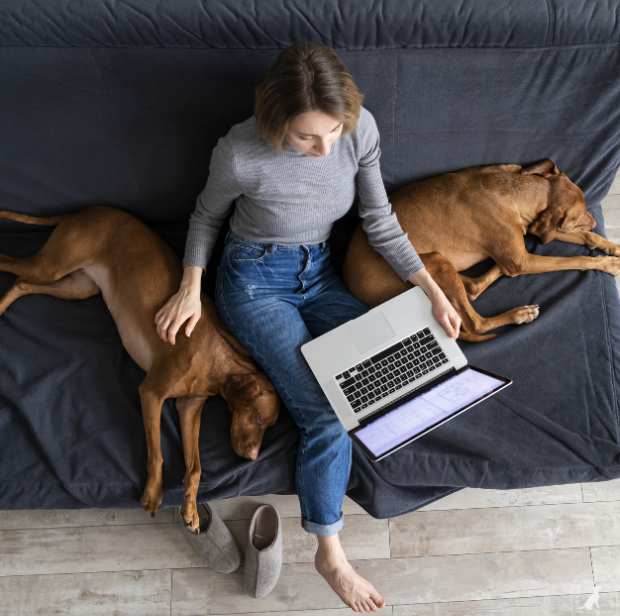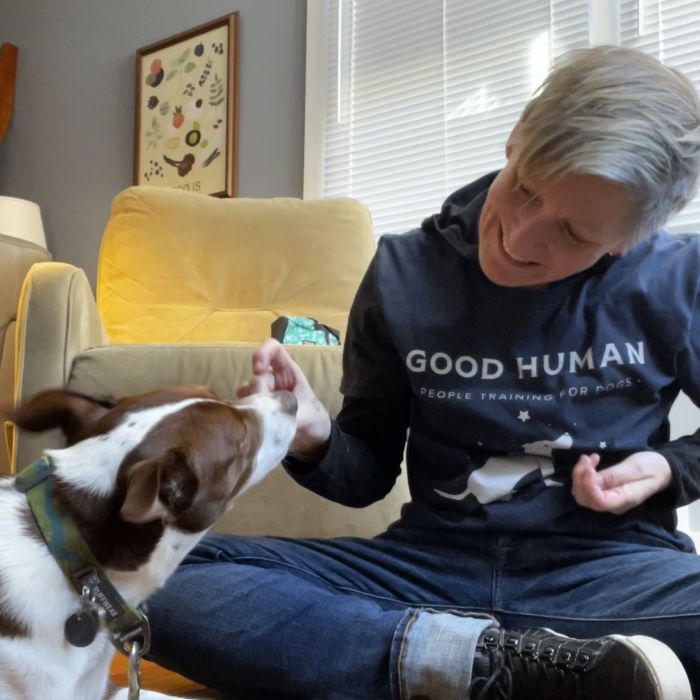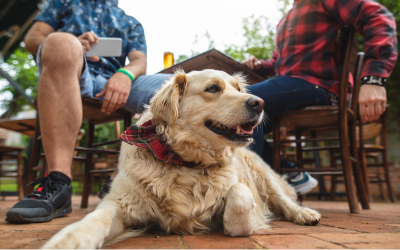As a professional dog trainer in Winston-Salem, NC, I understand the challenges of training dogs during the hot summer months. This blog post provides 10 essential tips to help you train your dog safely and effectively in hot weather, including choosing the right time and location, providing hydration breaks, using cooling accessories, and recognizing the signs of heat stroke.
Summers in the South are pretty miserable for all beasts. No one wants to be out in this heat, even me. And training dogs and their people is my most favorite thing. But consistency is so important. If you want better leash manners, you have to train them out of the house. If you want your dog to have polite manners in public, you’ll have to work in public. Training your service dog candidate? You can’t take summer months off. We have a few tips to help you get the most from your out-of-the-house training sessions while reducing the risk of overheating.
this heat, even me. And training dogs and their people is my most favorite thing. But consistency is so important. If you want better leash manners, you have to train them out of the house. If you want your dog to have polite manners in public, you’ll have to work in public. Training your service dog candidate? You can’t take summer months off. We have a few tips to help you get the most from your out-of-the-house training sessions while reducing the risk of overheating.
- Time of Day: Schedule training sessions during cooler parts of the day to avoid the heat of midday sun. Check the weather and plan ahead.
- Location: Take advantage of dog-friendly establishments in Winston-Salem, NC. See our blog: Dog-friendly Stores in Central NC. Conduct training in shaded spots and consider a Sniff Spot for a shady change of scenery.
- Hydration Breaks: Offer frequent water breaks to keep your dog hydrated and prevent heat exhaustion. Use a portable or collapsible water bowl that’s easy to pack and carry.
- Modify Training Sessions: Adjust the intensity and duration of training exercises to accommodate your dog’s comfort levels in hot weather. Keep it shorter than you think and end on a positive.
- Adapt to the Heat: Establishing an adaptation period in the spring or early summer will help your dog adjust to the temperatures. If you haven’t been working with your dog outside of the house, July is not the time to start.
- Cooling Accessories: Use cooling mats, vests, or bandanas to help regulate your dog’s body temperature during training sessions. Let your dog get used to them in the house before you use them in public spaces.
- Paw Protection: If the ground is too hot for your hand, it’s too hot for your dog’s paws. Consider some dog boots for your pal and let them acclimate at home before taking them on the road.
- The shorter the snout, the less they stay out: Brachycephalic breeds have more difficulty breathing and regulating their body temperature than long-nosed dogs. They don’t pant efficiently, which makes them more susceptible to overheating.
- Know the Signs: Recognizing the signs of heat stroke in dogs, such as excessive panting, drooling, vomiting, and weakness, is crucial for prompt intervention and prevention of serious health issues.
- Know the Protocol: If you suspect your dog is having a heat stroke, act quickly and calmly to cool them down and seek veterinary help immediately.
Treating an Overheated Dog
If you’re dog is showing signs of heat stress, immediately take these steps.
- Provide Air Circulation
Use a fan or circulate air around your dog to facilitate evaporation and cooling. - Monitor Their Temperature
Monitor your dog’s body temperature with a rectal thermometer and stop cooling once their temperature reaches around 103°F.
- Offer Water
If your dog is conscious and able to drink, let it have small amounts of cool water or lick ice cubes. - Seek Veterinary Care
Even if your dog seems to recover, seek immediate veterinary attention. Heat stroke can cause internal damage that may not be immediately apparent.
Putting it all together
Ultimately, use your judgment and prioritize your dog’s comfort and safety. If it feels uncomfortably hot for you outside, it’s surely too hot for your dog. In this case, stay inside and work in a different location in your home or make your training environment look different than usual. You can still make progress on your training goals without risking the effects of heat for you and your dog. Happy training!
Yet.






